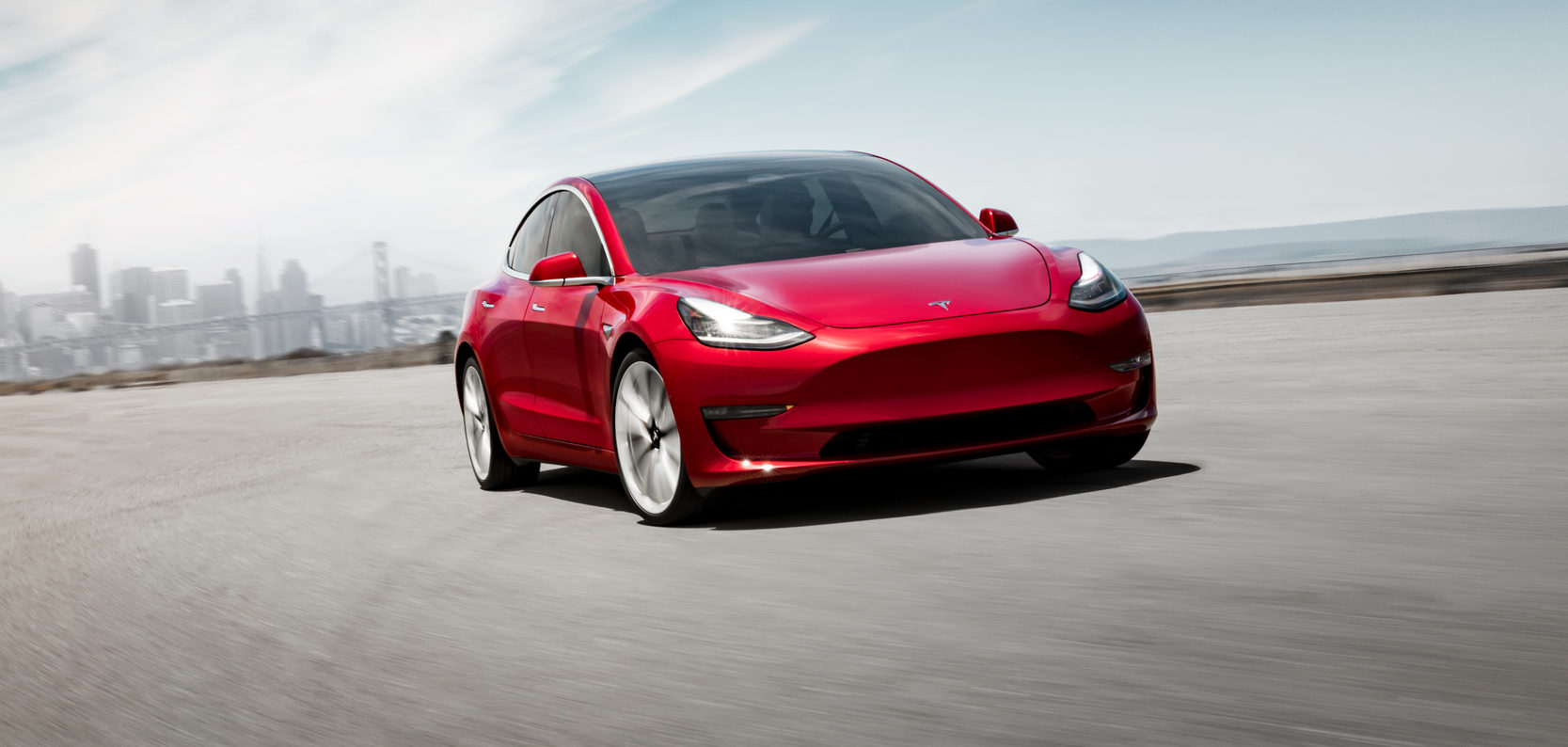
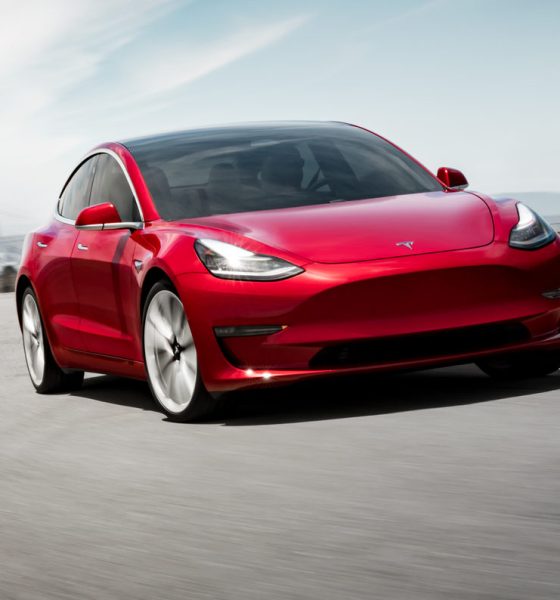
Lifestyle
Tesla redefines ‘luxury’ segment as industry shifts focus to technology
Tesla’s official website dubs the Model S, X, and 3 as “premium” electric cars. Nevertheless, Tesla’s electric cars such as the Model S have proven to be formidable entries in the luxury segment, particularly against mainstays from legacy automakers such as the Mercedes-Benz S-Class and the BMW 7 Series, which are characterized by plush amenities and expensive interior accents. How then, are Tesla’s premium vehicles, which adopt a minimalistic theme and an almost spartan interior, performing so well in a market where more is usually better? By invoking a sense of luxury through deep software integration, of course.
To say that Tesla’s electric cars have their own fair share of critics is an understatement. Among the criticisms directed at the company’s vehicles is the fact that they do not have the same luxurious features found on other vehicles in their class. Critics of Tesla would be quick to point out that the company’s vehicles are not fitted with the same premium materials found in their German rivals. Tesla’s cars continue to sell, however, because as those who have found themselves behind the wheel of a Tesla know, the company’s electric cars are just an entirely different breed of vehicle, offering a completely different driving experience.
131 days with my Tesla Model 3 and 7k miles later! I have a large grin on my face every day because of this car. Is it possible to love material things? Here’s to thousands of more miles of all electric driving. Thanks for an awesome car @Tesla and @elonmusk #Tesla #Model3 pic.twitter.com/tUYUc8kwU5
— A61 (@AUE_61) July 25, 2018
It’s not difficult to find social media posts from Tesla owners who state that they would never go back to driving a car powered by an internal combustion engine again. With the release of the Model 3, the number of new Tesla owners are increasing, and so are the numbers of positive reviews for the company’s electric cars. Considering Tesla’s plan for the Model 3, it is no surprise that the vehicle, which features a radically minimalistic interior, is frequently dubbed as the “iPhone of cars.”
https://twitter.com/PaulStorost/status/1022659335086845957
In a way, comparisons between Tesla and Apple are understandable, considering that both companies release products built around custom software. Apple designs its software for its hardware, ensuring that its offerings, such the iPhone, functions and performs optimally. This integration of hardware and software ultimately became the trigger that changed the market’s perception of what smartphones were capable of. Other manufacturers attempted to take on the iPhone through their own devices, including Samsung’s Android-powered S and Note series. To match the smoothness of Apple’s iOS-powered iPhones, Samsung equipped its flagship devices with as much specs, features, and accessories as the smartphones can handle. Samsung eventually pushed too far with its “more is better” strategy once, and the result was the Galaxy Note 7, a smartphone that literally went up in flames. Today, a perfect Android phone exists, and that is the Google Pixel series, a smartphone line built specifically for Android OS.
Once I had an iPhone, was I ever going to buy a non-iPhone device again?Nope. What about yourself? If there's a similar dynamic with Model 3, then one may see why $TSLA is valued beyond current cash flows & $F or $GM have a bleak future customer base (tariff red herring).
— Ryan Stuhr (@StuhrRyan) July 26, 2018
For now, Tesla’s competitors in the luxury segment are adopting a strategy not that different from Samsung. They adopt software and tech, but the level of integration is not that deep. Tech used by legacy carmakers, such as BMW with the top-tier M3’s heads-up display, could be seen as simple add-ons to a legacy platform and very little else. Tesla, on the other hand, builds everything in house, making software that works for the car and a car that works for the software. This becomes evident in improvements rolled out through over-the-air updates and features such as Enhanced Autopilot.
This integration allows Tesla’s electric cars to feel like a unified experience — one that can redefine how some perceive cars as a whole. For drivers of the premium electric cars, driving such a vehicle could be a turning point, similar to when one used a touch-based smartphone for the first time after using devices with physical keyboards for years. With the release of the Model 3, and based on positive reactions from the vehicle’s owners, it appears that the iPhone of cars has definitely arrived in the auto industry. As for the “Google Pixel of cars,” it seems that it might take a while before that vehicle would be made.

Lifestyle
Tesla Model S Plaid battles China’s 1500 hp monster Nurburgring monster, with surprising results
There is just something about Tesla’s tuning and refinement that makes raw specs seem not as game-changing.
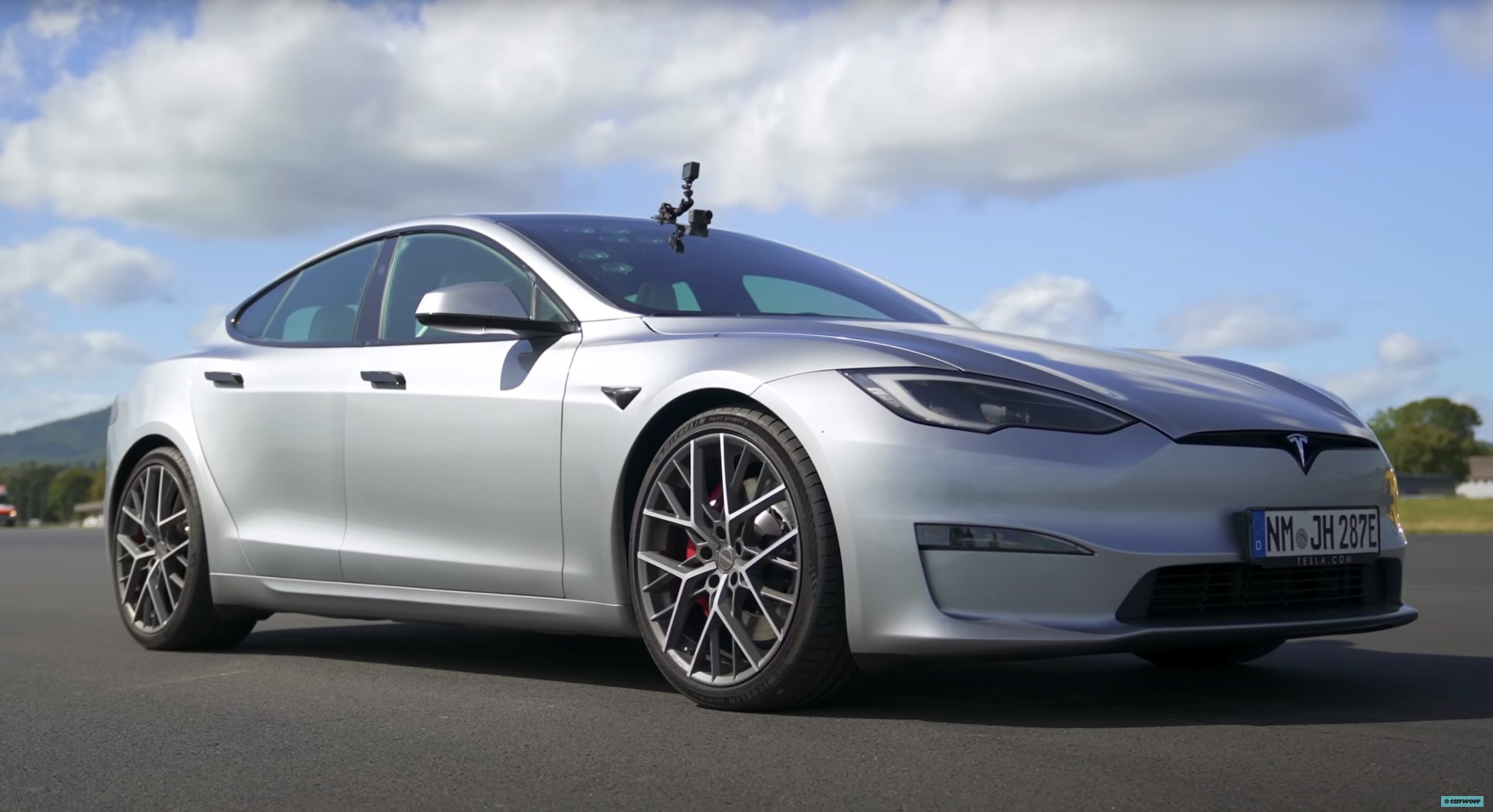
The Tesla Model S Plaid has been around for some time. Today, it is no longer the world’s quickest four-door electric sedan, nor is it the most powerful. As per a recent video from motoring YouTube channel Carwow, however, it seems like the Model S Plaid is still more than a match for some of its newer and more powerful rivals.
The monster from China
The Xiaomi SU7 Ultra is nothing short of a monster. Just like the Model S Plaid, it features three motors. It also has 1,548 hp and 1,770 Nm of torque. It’s All Wheel Drive and weighs a hefty 2,360 kg. The vehicle, which costs just about the equivalent of £55,000, has been recorded setting an insane 7:04.957 at the Nurburgring, surpassing the previous record held by the Porsche Taycan Turbo GT.
For all intents and purposes, the Model S Plaid looked outgunned in Carwow’s test. The Model S Plaid is no slouch with its three motors that produce 1,020 hp and 1,420 Nm of torque. It’s also a bit lighter at 2,190 kg despite its larger size. However, as the Carwow host pointed out, the Model S Plaid holds a 7:25.231 record in the Nurburgring. Compared to the Xiaomi SU7 Ultra’s record, the Model S Plaid’s lap time is notably slower.
Real-world tests
As could be seen in Carwow’s drag races, however, Tesla’s tech wizardry with the Model S Plaid is still hard to beat. The two vehicles competed in nine races, and the older Model S Plaid actually beat its newer, more powerful counterpart from China several times. At one point in the race, the Xiaomi SU7 Ultra hit its power limit due to its battery’s temperature, but the Model S Plaid was still going strong.
The Model S Plaid was first teased five years ago, in September 2020 during Tesla’s Battery Day. Since then, cars like the Lucid Air Sapphire and the Xiaomi SU7 Ultra have been released, surpassing its specs. But just like the Model Y ended up being the better all-rounder compared to the BYD Sealion 7 and the MG IM6, there is just something about Tesla’s tuning and refinement that makes raw specs seem not as game-changing.
Check out Carwow’s Model S Plaid vs Xiaomi SU7 drag race video below.
Lifestyle
500-mile test proves why Tesla Model Y still humiliates rivals in Europe
On paper, the BYD Sealion 7 and MG IM6 promised standout capabilities against the Model Y.
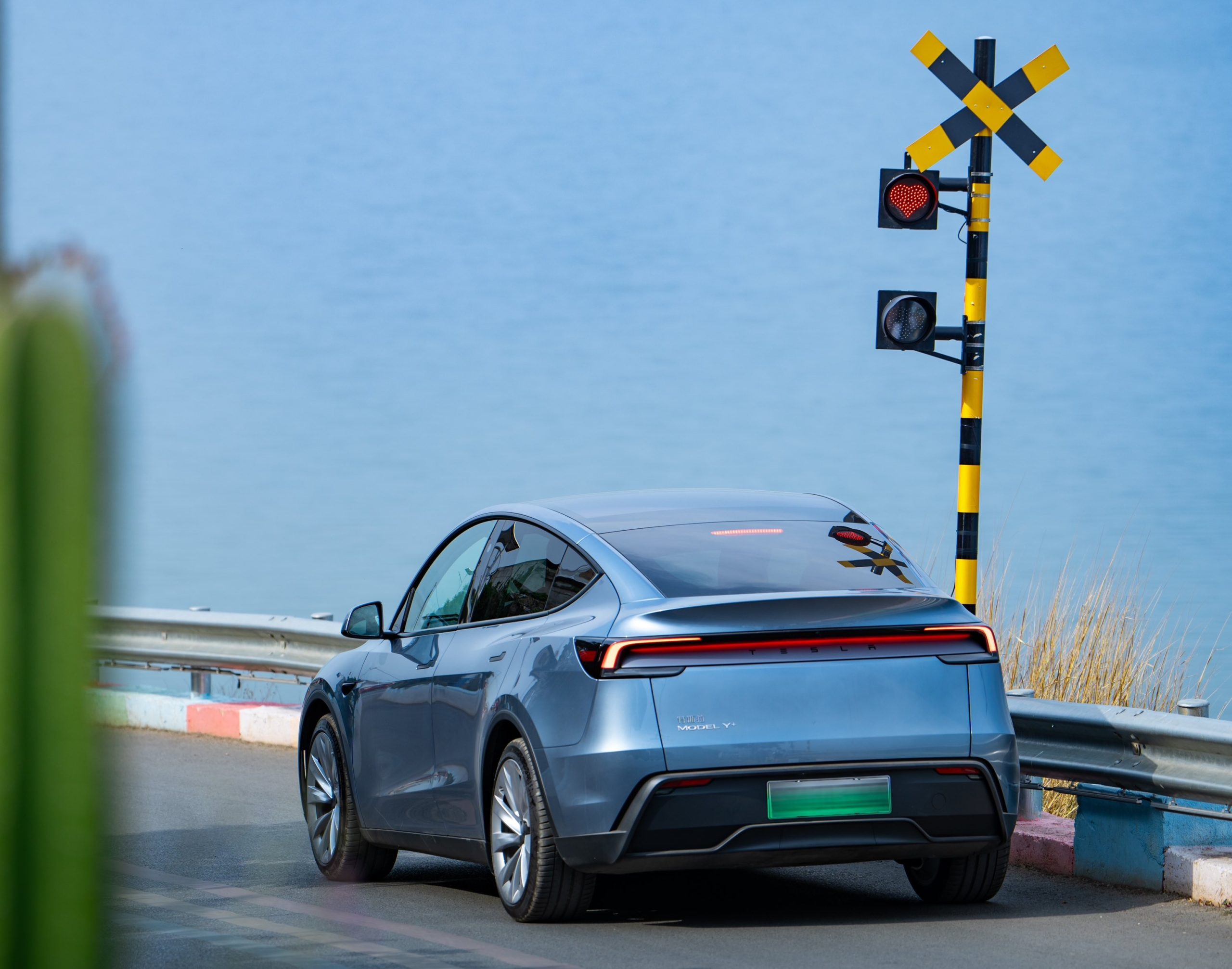
BYD is seeing a lot of momentum in Europe, so much so that mainstream media has taken every opportunity to argue that the Chinese automaker has beaten Tesla in the region. But while BYD sales this year in Europe are rising and Tesla’s registrations remain challenged, the raw capabilities of vehicles like the Model Y are difficult to deny.
This was highlighted in a 500-mile challenge by What Car? magazine, which showed that the new Tesla Model Y is more efficient, cheaper to run, and more reliable than rivals like the BYD Sealion 7, and even the nearly 400 KW-charging MG IM6.
Range and charging promises
On paper, the BYD Sealion 7 and MG IM6 promised standout capabilities against the Model Y. The Sealion 7 had more estimated range and the IM6 promised significantly faster charging. When faced with real-world conditions, however, it was still the Model Y that proved superior.
During the 500-mile test, the BYD nearly failed to reach a charging stop, arriving with less range than its display projected, as noted in a CarUp report. MG fared better, but its charging speeds never reached its promised nearly-400 kW charging speed. Tesla’s Model Y, by comparison, managed energy calculations precisely and arrived at each stop without issue.
Tesla leads in areas that matter
Charging times from 25% to 80% showed that the MG was the fastest at 17 minutes, while Tesla and BYD were close at 28 and 29 minutes, respectively. Overall efficiency and cost told a different story, however. The Model Y consumed 19.4 kWh per 100 km, compared to 22.2 for MG and 23.9 for BYD. Over the full trip, Tesla’s charging costs totaled just £82 thanks to its supercharger network, far below BYD’s £130 and MG’s £119.
What Car? Magazine’s testers concluded that despite BYD’s rapid sales growth and the MG IM6’s seriously impressive charging speeds, Tesla remains the more compelling real-world choice. The Model Y just offers stability, efficiency, and a proven charging infrastructure through its Supercharging network. And as per the magazine’s hosts, the Model Y is even the cheapest car to own among the three that were tested.
Watch What Car? Magazine’s 500-mile test in the video below.
Lifestyle
Tesla Cybertruck slapped with world’s least intimidating ticket, and it’s pure cringe
One cannot help but cringe and feel second-hand embarrassment at the idea of a person just driving around with a stack of these babies.
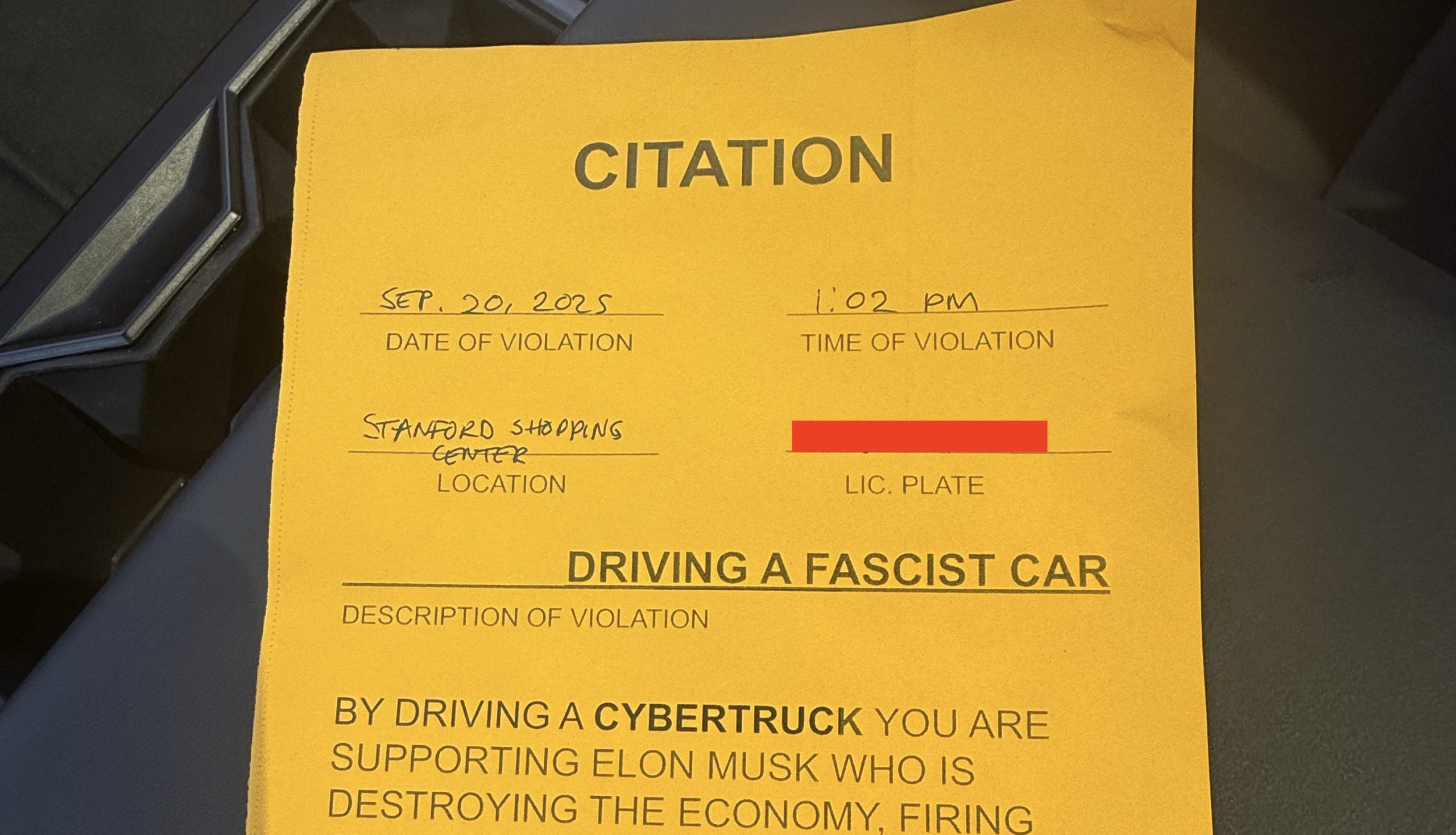
A Cybertruck parked at Stanford Shopping Center in California was recently hit with what might be the most try-hard piece of paper ever slipped under a wiper blade: a “fake citation” accusing the driver of supporting a “fascist car.”
The note, shared on X by Tesla staff program manager Ryan Torres, quickly made the rounds on X, where it quickly gained attention as an example of how not to protest.
The world’s least intimidating ticket
According to the citation, the supposed “violation” was “driving a fascist car.” The remedial action? Take the bus, call an Uber, or ride a bike. The note also dubbed Elon Musk a “chainsaw-wielding Nazi billionaire.” Now, protests against Tesla and Elon Musk have become commonplace this year, but one cannot help but cringe and feel second-hand embarrassment at the idea of a person just driving around with a stack of fake anti-Tesla/Musk citations.
Torres pointed out the irony himself in his post on X. Tesla currently employs over 140,000 Americans, and SpaceX has put the U.S. firmly back at the top of space technology. As Torres put it, maybe the person behind the world’s least intimidating ticket should “read a book on innovation before vandalizing” other people’s property.
Peak performative clownery
Not to mention that the fake ticket’s logic collapses under its own weight. EVs like the Cybertruck are literally designed to reduce emissions, not “destroy the economy.” If anything, Tesla has bolstered the United States’ economy by fueling jobs in engineering, manufacturing, and clean energy. It’s not the first time a Tesla has been the target of vandalism or politically charged notes, but this one stands out for sheer cringe value.
Torres summed it up neatly: “Peak clownery.” On that point, at least, the citation earns full marks. In a way, though, perhaps cringe fake tickets are not as bad as the literal firebombs that were being thrown at Tesla stores and cars earlier this year because some critics were gleefully misinformed about Elon Musk.








